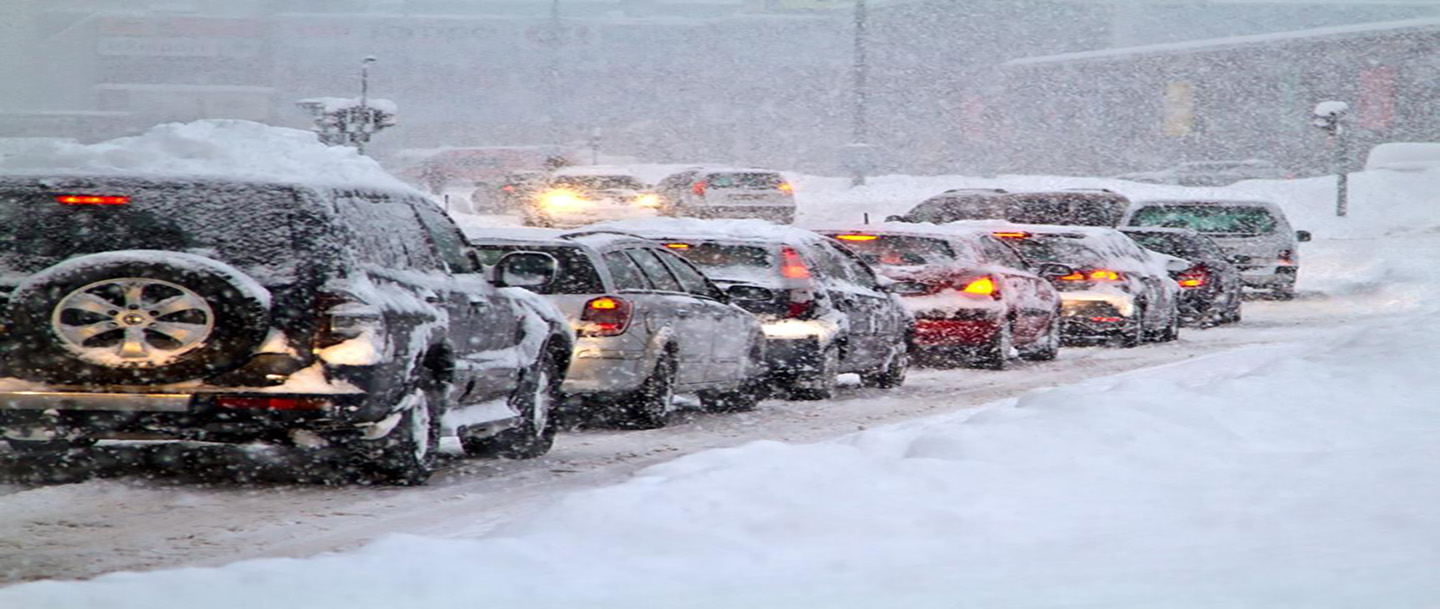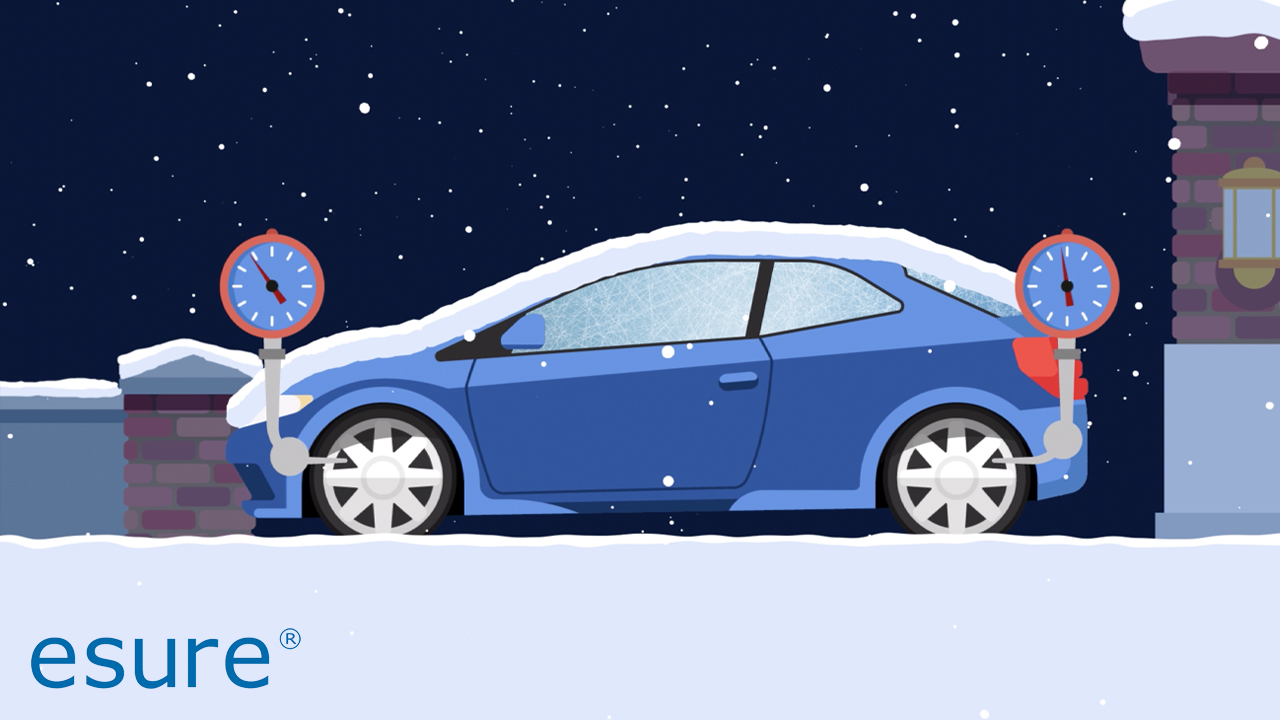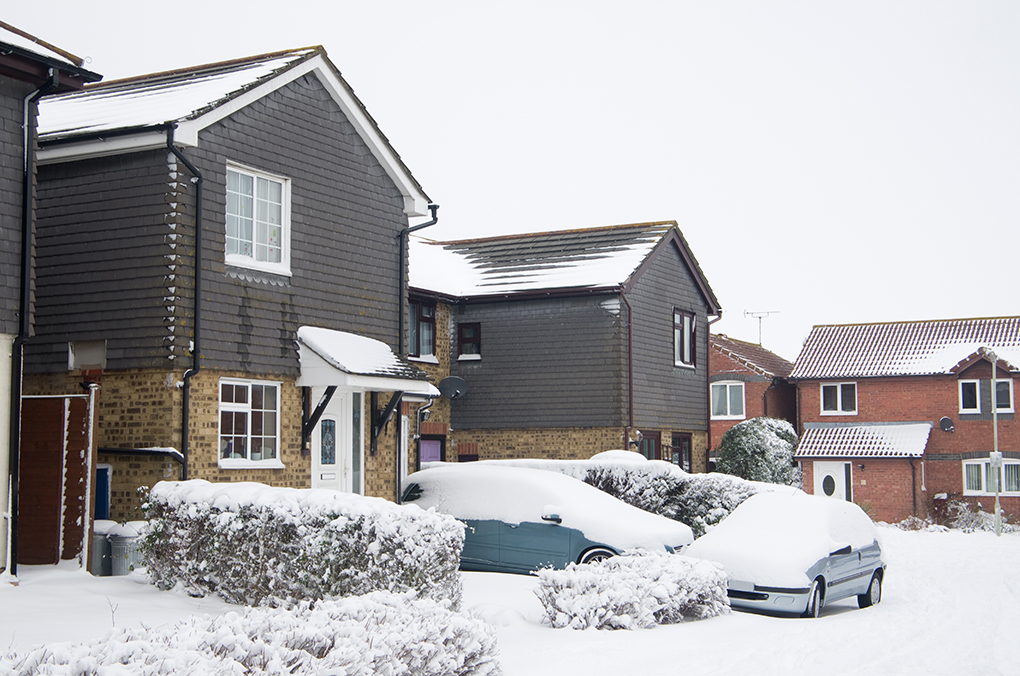Plan ahead
You should avoid driving unless absolutely necessary when there is snow and ice on the roads. If you do have to venture out, you’ll have to drive slower than usual, and the roads might be congested, so you’ll need more time. Stay informed and check your route, you can use the Met Office to stay up to date with weather warnings. Regularly check tyres to ensure they’re in good condition and have a tread depth of at least 3mm (as recommended by many vehicle manufacturers). It’s worth also making sure there is antifreeze in your radiator and windscreen washer bottle. Plus you might want to keep an ice scraper and de-icer in your vehicle during winter.
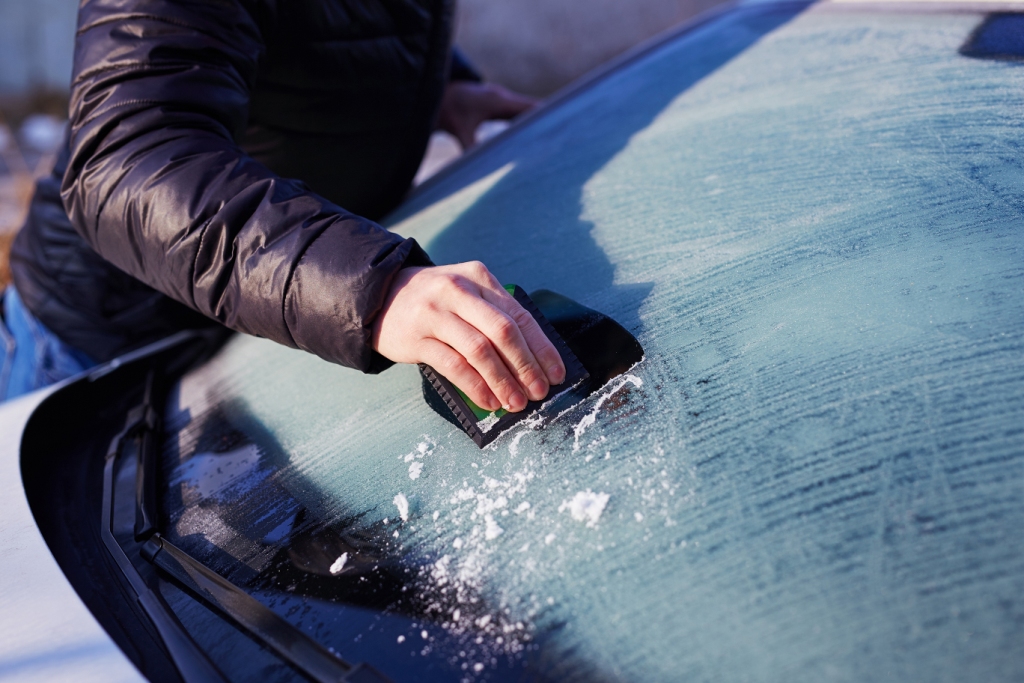
Defrost your car thoroughly
Using credit cards or CD boxes to scrape the windscreen can take more time, and scratch the glass. Another tip is to not pour hot water on the ice as the rapid increase in temperature could cause the glass to crack. On particularly cold mornings, hot water will cool quickly and freeze again anyway. Instead, use de-icer spray and an ice scraper.
Make sure you clear all snow from the roof
You should clear the snow off all the windows, lights, and the roof. Driving around with a thick layer of snow on your roof can be dangerous as it could slip forward onto your windscreen, or backwards into the path of the car behind.
Take an emergency pack with you
This might include a torch, a blanket and warm clothes, food and drink, first-aid kit, spade, warning triangle, and high-visibility vest. If you have any essential medication, you should make sure this is also included in your pack.
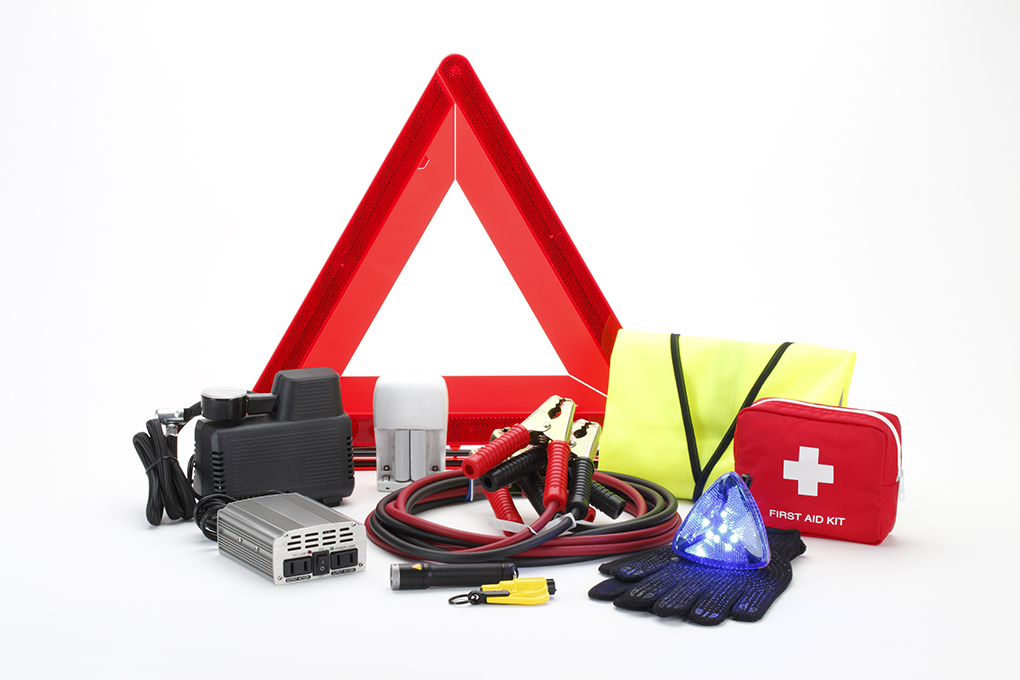
Use your gears effectively
Use the highest gear possible to avoid wheel spin, but take care not to let your speed creep up. If stuck in snow, do not spin the wheels or rev the vehicle, as this will dig the wheels further in the ground. Instead, put the vehicle into as high a gear as possible and slowly manoeuvre the vehicle lightly forwards and backwards to gently creep out.
Leave ten times the normal gap to the car in front
You should always maintain a safe distance but it’s vital in icy weather as you need to account for much longer stopping distances and being able to brake gently–harsh braking is more likely to make you skid.*
Plan your next move carefully
Brake gently to avoid locking the wheels. Get into a low gear earlier than normal and allow the speed of the vehicle to fall gradually. Take corners very slowly–steer gently and steadily to avoid skidding.

Dipped beams
Turn these on to make sure other drivers can see you, but avoid using your full beam or fog lights (unless it’s actually required) as they can dazzle other drivers. The Highway Code states that drivers must turn headlights on when visibility reduces to less than 100m, so make sure you can see and be seen.
Don’t panic if you skid
Never brake if the vehicle skids–instead, ease off the accelerator and steer slightly into the direction of the skid until you gain control.
*www.rac.co.uk/drive/advice/learning-to-drive/stopping-distances/
You might also be interested in
The winterproofed car
Get ahead of the pack on the roads this winter
Keeping safe during the snow
How to keep your home safe and warm during the cold snap
